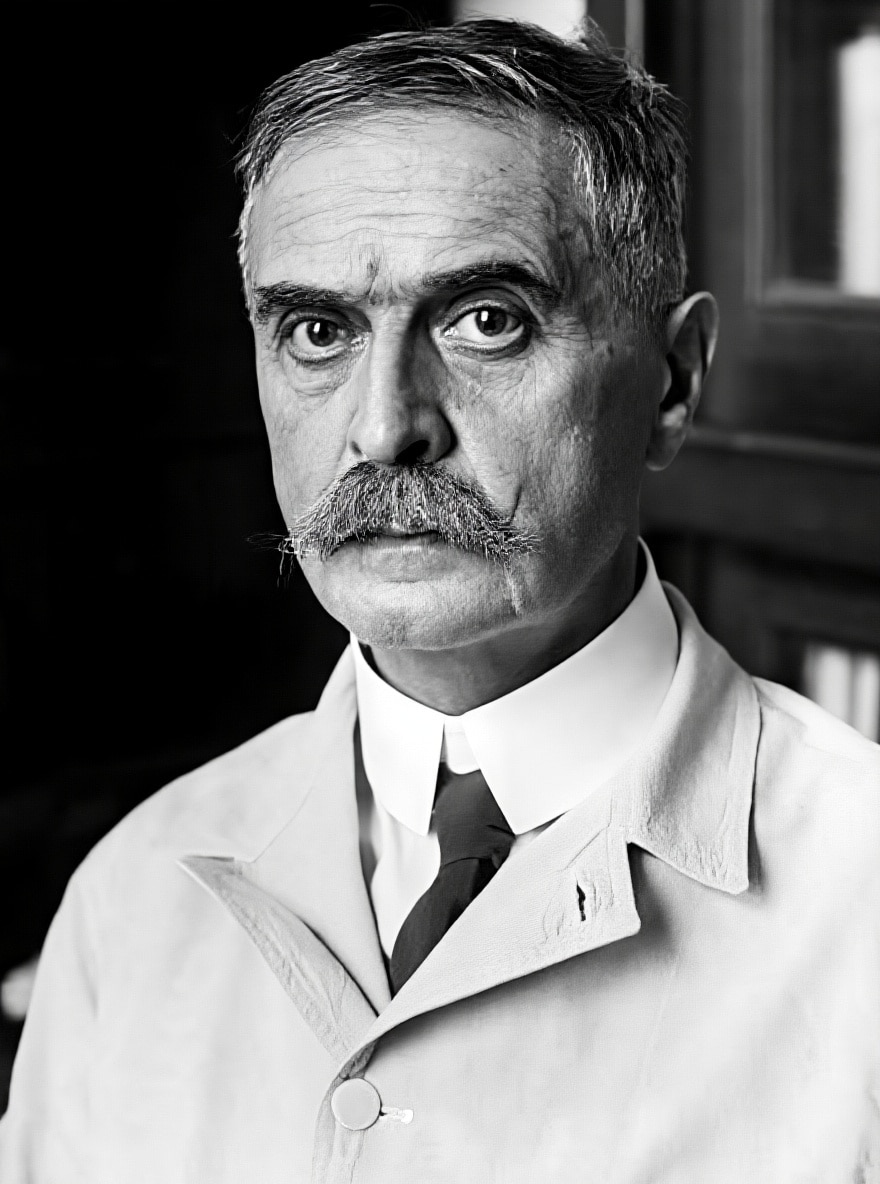Karl Landsteiner

Karl Landsteiner (1868-1943) was an Austrian-American immunologist whose discoveries fundamentally transformed transfusion medicine, immunology, and virology.
Best known for identifying the ABO blood group system in 1901, Landsteiner demonstrated that human blood could be classified into groups based on agglutination reactions between red cells and serum. This foundational work explained the immunological basis for transfusion incompatibility and enabled the development of safe blood transfusion protocols. The ABO system remains the cornerstone of blood typing to this day and earned him the Nobel Prize in Physiology or Medicine in 1930.
Beyond ABO typing, Landsteiner made further landmark contributions to immunohematology. In 1927, in collaboration with Philip Levine, he identified the MN and P blood group systems, expanding the understanding of human blood antigenic variation. He also helped characterize the immunological specificity of haptens and their role in antigen-antibody interactions, laying groundwork for the emerging field of molecular immunology. His 1936 monograph Die Spezifität der Serologischen Reaktionen synthesized decades of immunological research and remains a classic in the field.
In 1940, alongside Alexander Wiener, Landsteiner discovered the Rhesus (Rh) blood group system, including the critical Rh(D) antigen responsible for hemolytic disease of the newborn (HDFN). This finding explained previously unresolved cases of transfusion reactions and fetal anemia, and led to preventative measures such as Rh immunoglobulin administration in Rh-negative mothers. The Rh factor discovery further cemented Landsteiner’s legacy as a central figure in modern transfusion medicine.
Landsteiner’s scientific breadth also extended to virology. In 1909, with Erwin Popper, he demonstrated the viral aetiology of poliomyelitis through transmission experiments in monkeys, laying the path for later vaccine development. A meticulous experimentalist with an aversion to public acclaim, Landsteiner published over 340 papers and maintained a lifelong focus on experimental rigor. He is widely regarded as the “Father of Transfusion Medicine,” and his work has saved countless lives through its enduring impact on blood safety and immunological science.
Biographical timeline
- 1868 – Born June 14 in Baden bei Wien, Austria
- 1875 – Father died of a heart attack; Karl was placed under the guardianship of Josef Hersik
- 1885 – Entered the University of Vienna Medical School
- 1888 – Completed one year of mandatory military service
- 1890 – Converted to Catholicism with his mother
- 1891 – Graduated MD, University of Vienna; published on diet’s influence on blood composition
- 1891–1893 – Studied chemistry under Emil Fischer (Würzburg), Eugen Bamberger (Munich), and Arthur Hantzsch (Zurich)
- 1896 – Returned to Vienna; assistant to Max von Gruber at the Hygiene Institute
- 1897 – Appointed assistant to Anton Weichselbaum at the Institute of Pathological Anatomy in Vienna
- 1897–1908 – Conducted ~3,600 autopsies and published 75 papers, including key work on serology and immunology
- 1900–1901 – Discovered the ABO blood group system; published pivotal paper “Agglutination of Normal Human Blood”
- 1902 – Colleagues Decastello and Sturli identified AB group
- 1908 – Became Director of Laboratories, Wilhelminaspital, Vienna; also demonstrated polio’s viral nature with Erwin Popper
- 1911 – Appointed Professor of Pathological Anatomy, University of Vienna (unpaid)
- 1916 – Married Leopoldine Helene Wlasto
- 1917 – Birth of his son, Ernest Karl Landsteiner
- 1919 – Emigrated to The Hague, Netherlands, became prosector at R.K. Hospital
- 1922 – Published 12 papers on immune responses in the Netherlands
- 1923 – Moved to New York to join Rockefeller Institute for Medical Research
- 1926 – Awarded Aronson Prize
- 1927 – With Philip Levine, identified MN and P blood group systems
- 1929 – Became a U.S. citizen
- 1930 – Awarded the Nobel Prize in Physiology or Medicine for ABO blood group discovery
- 1936 – Published The Specificity of Serological Reactions
- 1937 – Identified the Rhesus (Rh) factor with Alexander Wiener
- 1939 – Retired from Rockefeller Institute, remained as emeritus
- 1943 – Died June 26 from a coronary thrombosis in New York City
Medical Eponyms
Das Serum gesunder Menschen wirkt nicht nur auf tierische Blutkörperchen agglutinierend, sonders öfters auch auf menschliche, von anderen Individuen stammende. Es bleibt zu entscheiden, ob diese Erscheinung durch ursprüngliche individuelle Verschiedenheiten oder durch die erfolgte Einwirkung von Schädigungen etwa bakterieller Natur bedingt ist
The serum of healthy people is not only acting agglutinating on animal blood corpuscles, but often also on blood from other individuals. It remains to decide whether this is caused by natural, individual differences or as a consequence of damage of some bacterial nature
Landsteiner
Major Publications
- Landsteiner K. Ueber den Einfluss der Nahrung auf die Zusammensetzung der Blutasche.. Zeitschrift für Physiologische Chemie. 1892; 16: 13–19
- Landsteiner K. Zur Kenntnis der antifermentativen, lytischen und agglutinierenden Wirkungen des Blutserums und der Lymphe. Centralblatt für Bakteriologie, Parasitenkunde und Infektionskrankheiten. 1900; 27: 357-362. [The footnote]
- Landsteiner K. Über Agglutinationserscheinungen normalen menschlichen Blutes.
Wiener klinische Wochenschrift, 1901; 14: 1132-1134 [English translation]
References
Biography
- Karl Landsteiner 1868–1943, The Journal of Immunology, 1944; 48(1): 6–16
- Gottlieb AM. Karl Landsteiner, the melancholy genius: his time and his colleagues, 1868-1943. Transfus Med Rev. 1998 Jan;12(1):18-27
- van den Tweel JG. Landsteiner, Karl (1868–1943) In: Pioneers in Pathology. 2017: 322-327
- Mohd Noor NH, Siti Asmaa MJ. Karl Landsteiner (1868-1943): A Versatile Blood Scientist. Cureus. 2024 Sep 7;16(9):e68903
- Fresquet JL. Karl Landsteiner (1868-1943). Historia de la Medicine
- Karl Landsteiner. NobelPrize.org
Eponymous terms
Eponym
the person behind the name
BA MA (Oxon) MBChB (Edin) FACEM FFSEM. Emergency physician, Sir Charles Gairdner Hospital. Passion for rugby; medical history; medical education; and asynchronous learning #FOAMed evangelist. Co-founder and CTO of Life in the Fast lane | On Call: Principles and Protocol 4e| Eponyms | Books |
